Historical Photos of Chin Woo’s Golden Lions
The Singapore Chin Woo (Athletic) Association’s lion dance troupe opens their archives for a peek into the rich history of their Golden Lions.
By Stephanie Pee
In 1934, Wei Yuan Feng (1906–84), a pioneer martial arts instructor formerly with the Chin Woo in Shanghai, brought a pair of northern lions to Singapore. This marked the start of the Singapore Chin Woo (Athletic) Association Lion Dance Troupe, which eventually became known as the Golden Lion Dance Troupe.1
These photos, shared from the archives of the Singapore Chin Woo (Athletic) Association, present a rare look into the rich history of the Chin Woo Northern Lions in Singapore.
While both Northern and Southern lion dances are rooted in martial arts, they are also two distinct styles of lion dance that come from different regions in China. The Northern Lion is usually larger and more vibrantly coloured, with a long, flowing mane. Its head features large eyes and multiple bumps on the back of their heads. Its movements can be said to be sometimes dog- or cat-like, hence they come across as gentle, playful, lively and even tame. Its Southern counterpart, on the other hand, has a prominent horn on its head and is typically smaller.2 They are also known for being more aggressive in stance, particularly during the “plucking of the greens” or 踩青 (cai qing). This is when the lion “eats” an object like lettuce during the performance and throws it out, symbolising the spread of good luck and prosperity.3
The first pair of northern lions brought to Singapore were unfortunately destroyed during the Second World War.4 Their heads were made of mud and sand, making them heavy and uncomfortable. Each lion weighed around 10 kg and their heft meant that dancers could only manage limited – and therefore clumsy – moves.5
In 1945, Wei ordered another pair of lions from the Shanghai Chin Woo Association, but they only arrived in 1953. However, they were still extremely heavy and difficult to move, let alone to dance in. The pair of lions were eventually donated to Nanyang University in Singapore (today’s Nanyang Technological University).6
Together with fellow martial arts instructor, Fang You Chang, Wei decided to make the lion’s head out of bamboo, golden paper and golden wool. Golden yellow hemp from the Philippines was used for the cape of the lion’s body. This resulted in a lion that was about half the weight of the original lions – and, more importantly, one that was easier to manoeuvre.7
Hailing from the Chin Woo Athletic Association, the lion dancers were athletic and agile, often performing thrilling stunts such as jumping from heights. They had to realistically express the movements and expressions of the lions, such as yawning, stretching, fighting and sitting.8 Each performance was accompanied by drums, gongs and the suona (a traditional double-reeded Chinese musical instrument).9
The lions also performed with pugilists, who would engage the lions with a xiu qiu (an auspicious ball made of ribbons). These interactions not only showcased the athleticism of the dancers, but also drew out the different moods and playfulness of the lions.10
In 1967, the Chin Woo Lion Dance Troupe performed during Singapore’s National Day Parade. Almost a decade later, in 1976, the image of the northern lion was printed on Singapore’s $10 note.11
Today, the Golden Lion Dance Troupe continues to perform and conducts classes for those interested in the art.
For more on the Singapore Chin Woo (Athletic) Association check out this article by Senior Librarian Seow Peck Ngiam.
All photos in this essay are courtesy of the Singapore Chin Woo (Athletic) Association. We would like to thank Jack Tan, Secretary General of the Singapore Chin Woo (Athletic) Association for sharing these photographs.
 A pair of northern lions, 1930s. The heads of the early lions were made of yellow clay and their capes of green hemp, making them very heavy.
A pair of northern lions, 1930s. The heads of the early lions were made of yellow clay and their capes of green hemp, making them very heavy.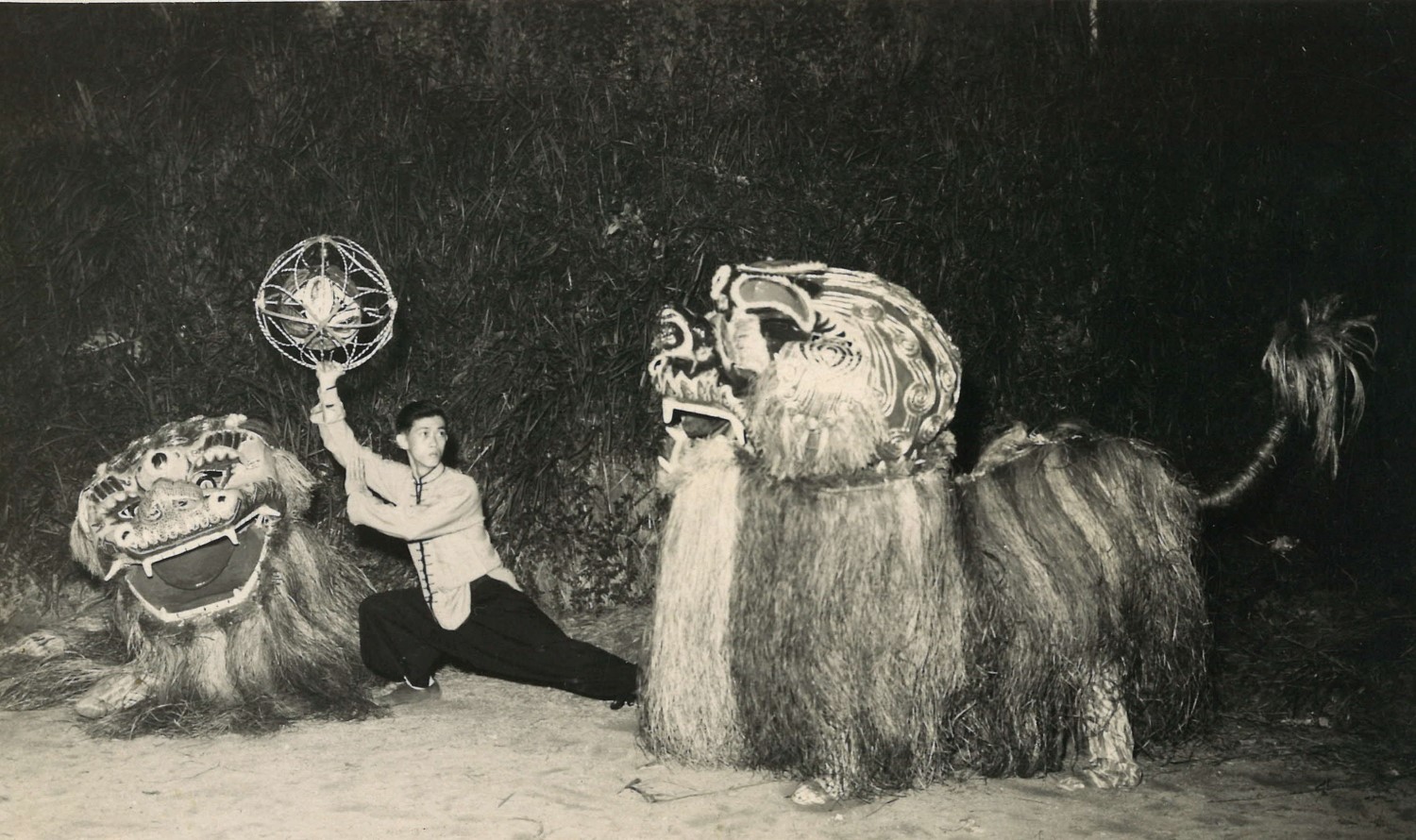 A pugilist engages the lions with a xiu qiu, an auspicious ball made of ribbons, 1952.
A pugilist engages the lions with a xiu qiu, an auspicious ball made of ribbons, 1952.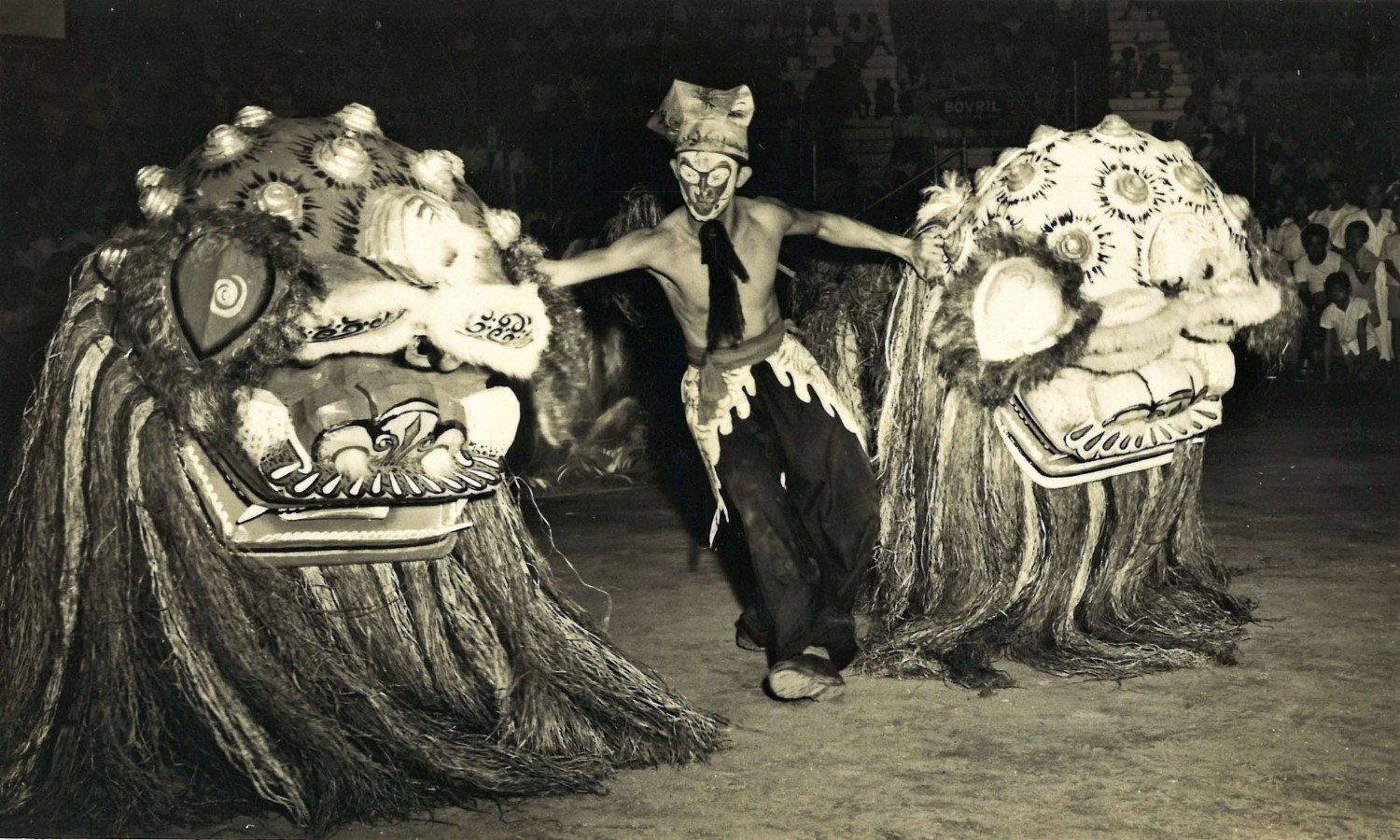 A performance on 30 September 1954 at Gay World Stadium. The performer in the middle is Choo Sai Wen (朱世荣).
A performance on 30 September 1954 at Gay World Stadium. The performer in the middle is Choo Sai Wen (朱世荣).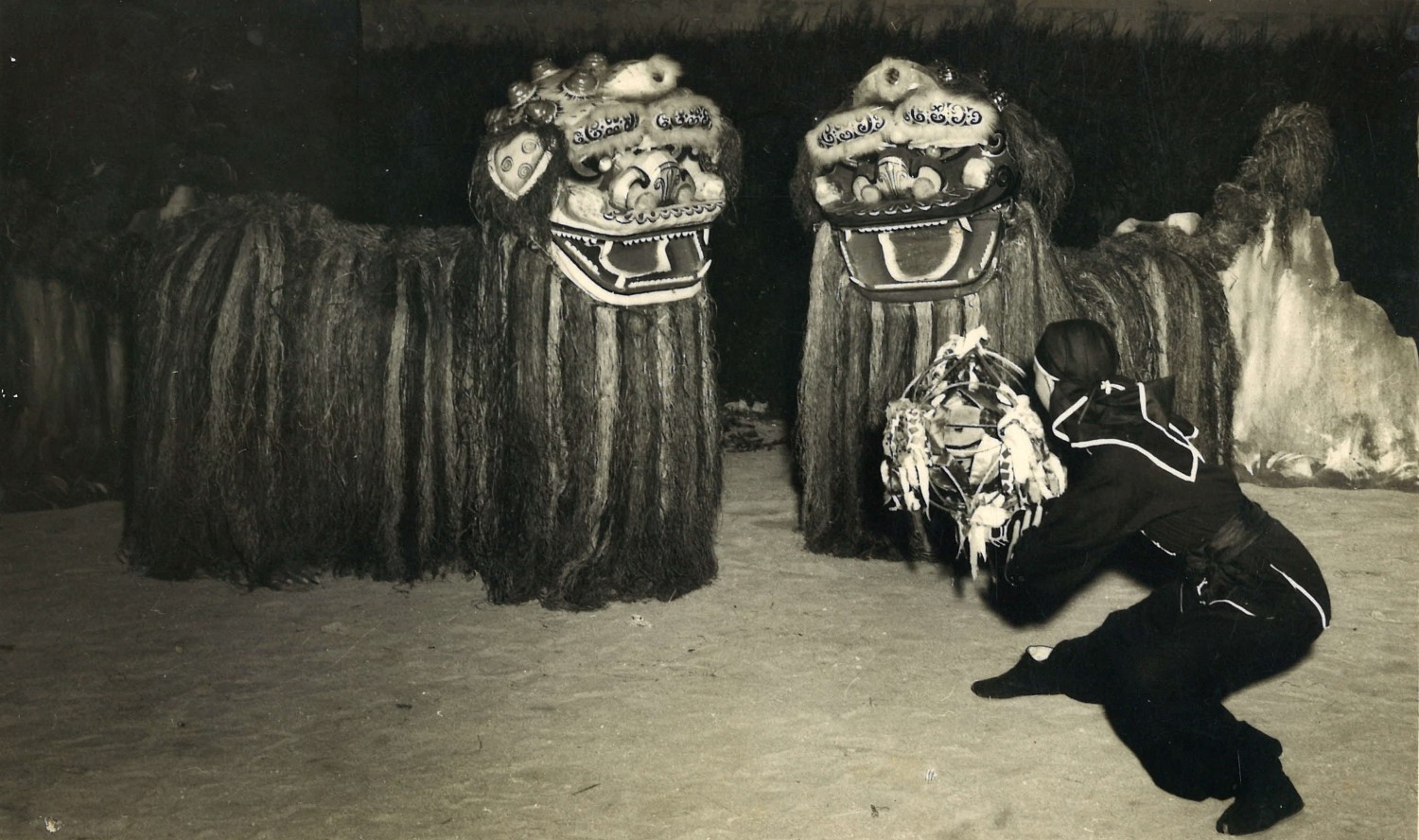 A pugilist entices the lions with a xiu qiu, 1954.
A pugilist entices the lions with a xiu qiu, 1954.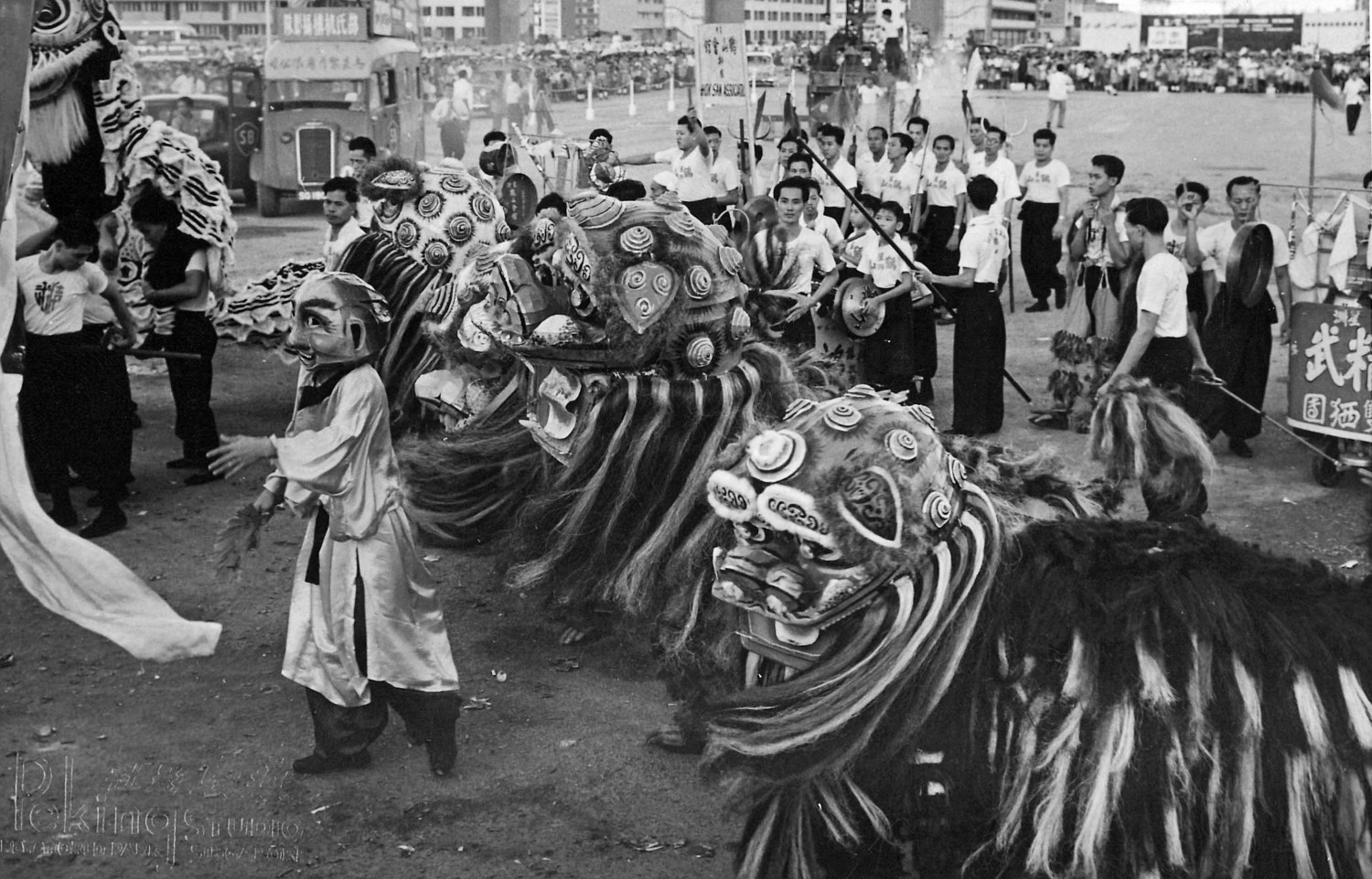 A performance in 1959.
A performance in 1959.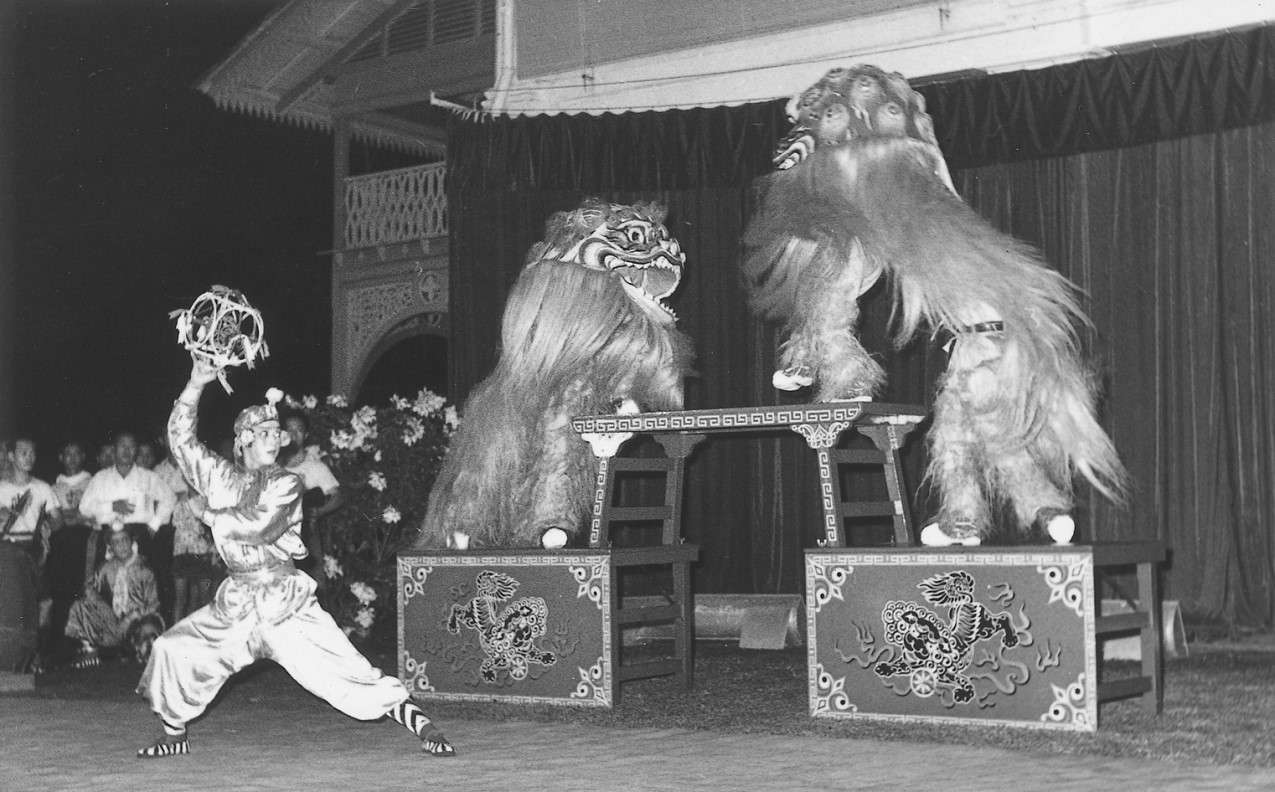 The pugilist often added another level of excitement and theatrics to the performance, 1965.
The pugilist often added another level of excitement and theatrics to the performance, 1965.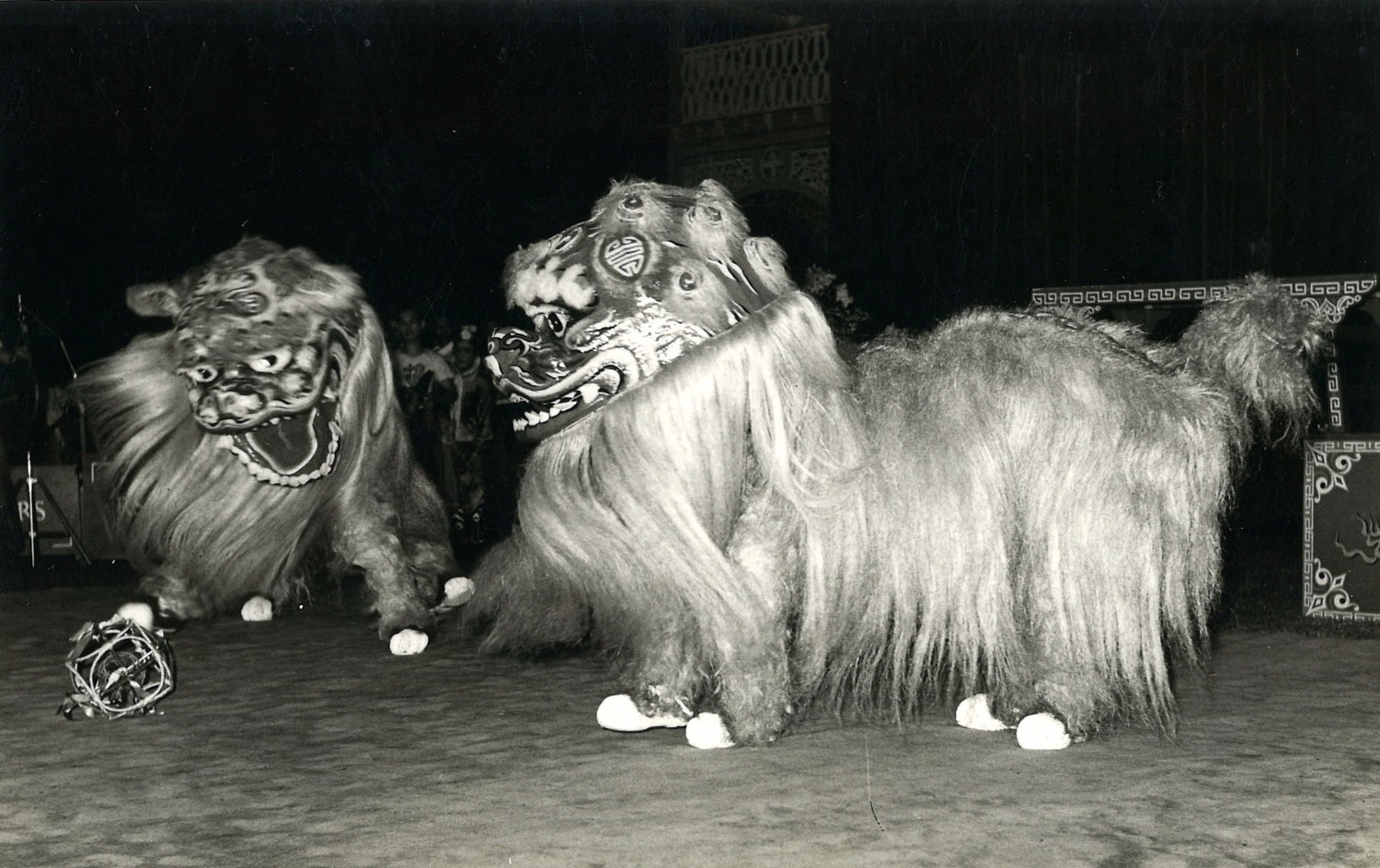 The lions playing with a xiu qiu, 1965. The xiu qiu not only added excitement to the performance but also showcased the dancers’ athleticism and the different characters of the lions.
The lions playing with a xiu qiu, 1965. The xiu qiu not only added excitement to the performance but also showcased the dancers’ athleticism and the different characters of the lions. Lions taking a break, 1965.
Lions taking a break, 1965.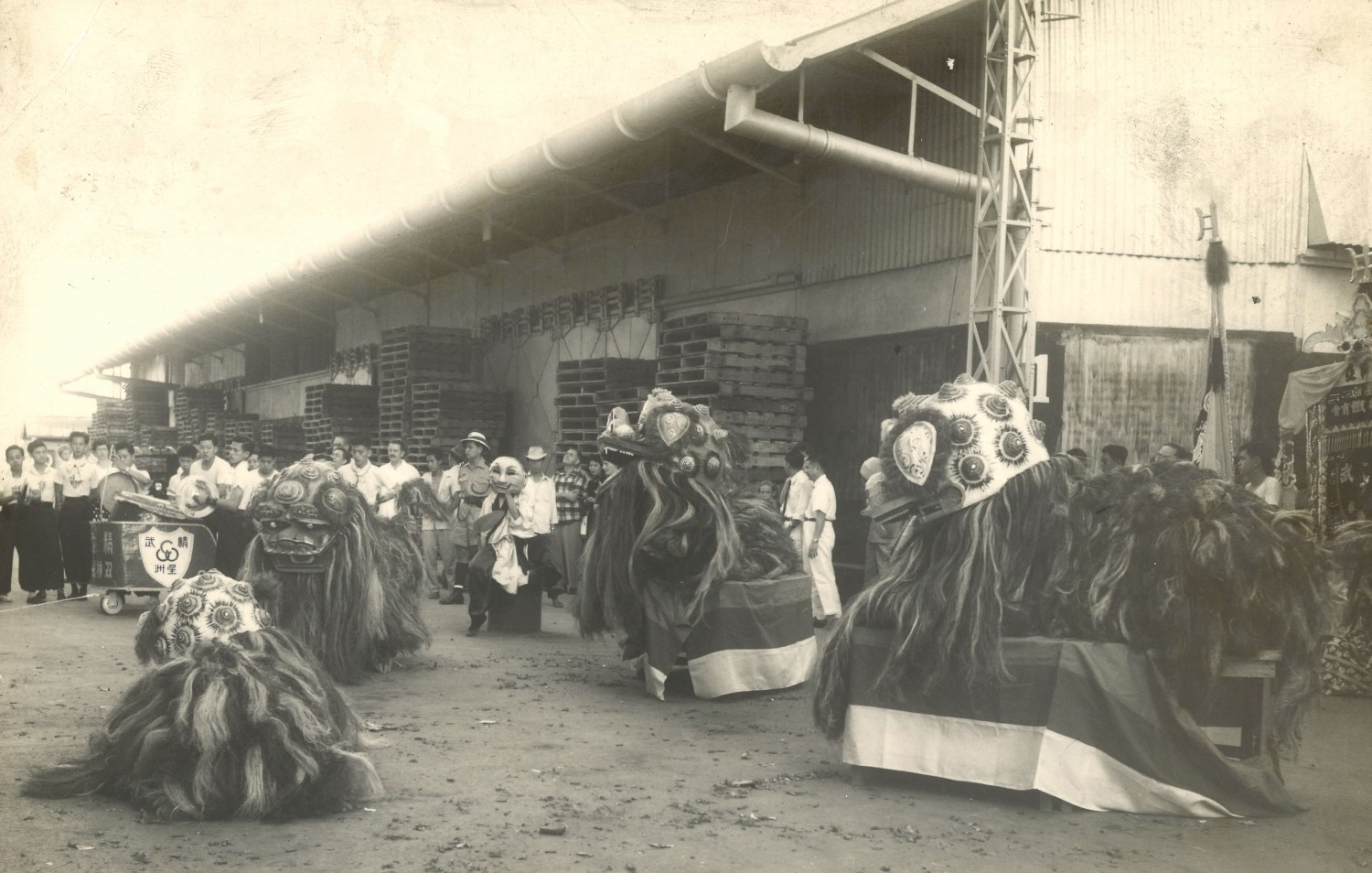 The lions performing at Kallang Park for an event jointly organised by the Ministry of National Development and the Livestock Feed Merchants Association in 1965.
The lions performing at Kallang Park for an event jointly organised by the Ministry of National Development and the Livestock Feed Merchants Association in 1965.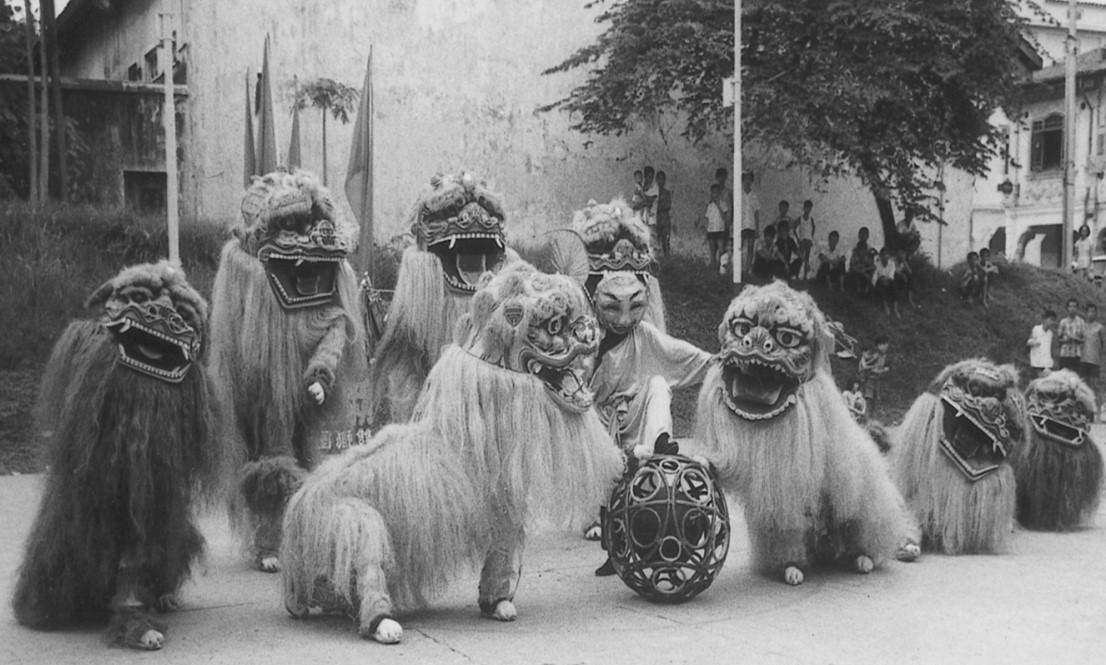 The lions pose with a xiu qiu at a performance in 1966.
The lions pose with a xiu qiu at a performance in 1966.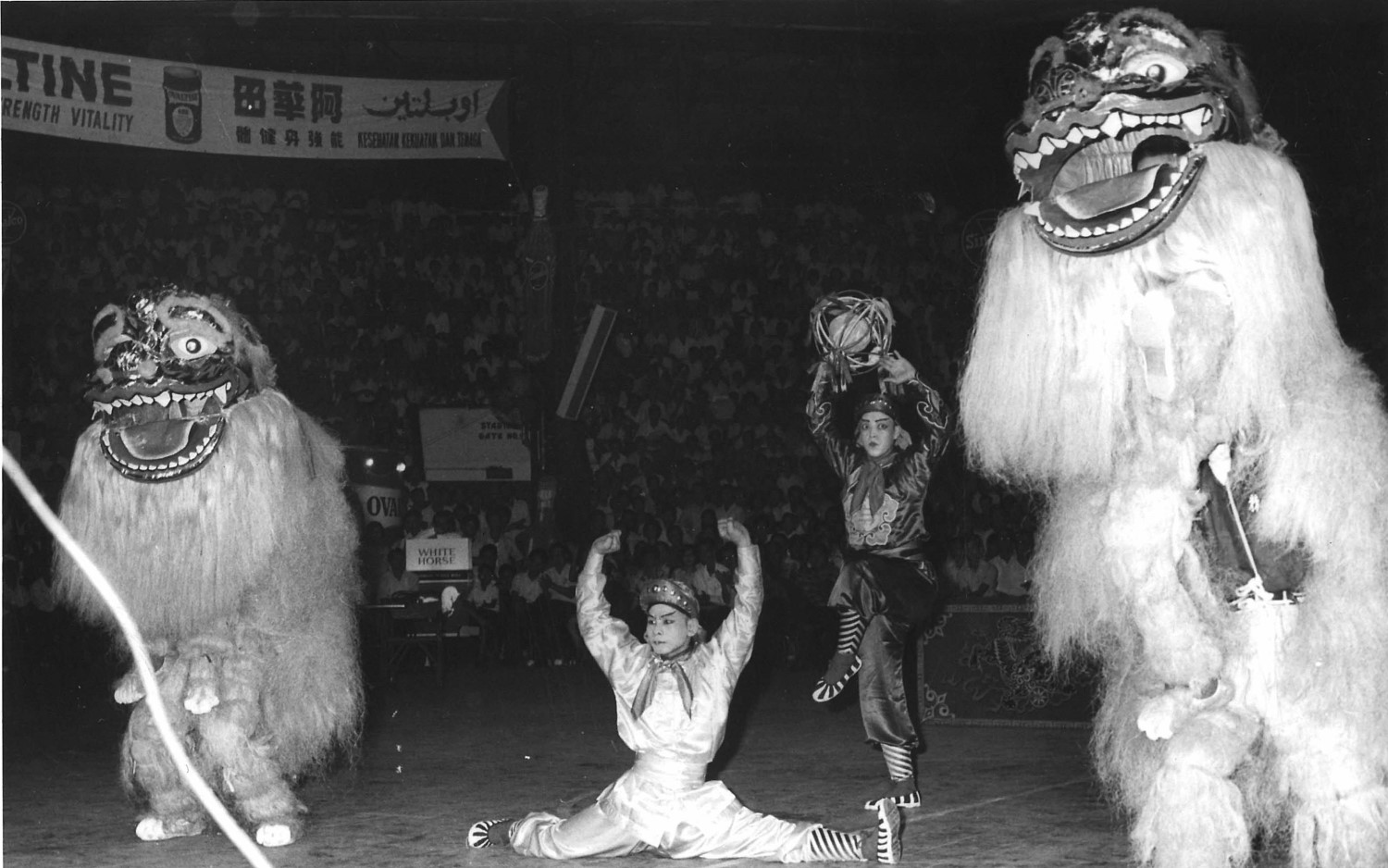 The troupe performing at the first National Wushu Competition in 1967.
The troupe performing at the first National Wushu Competition in 1967.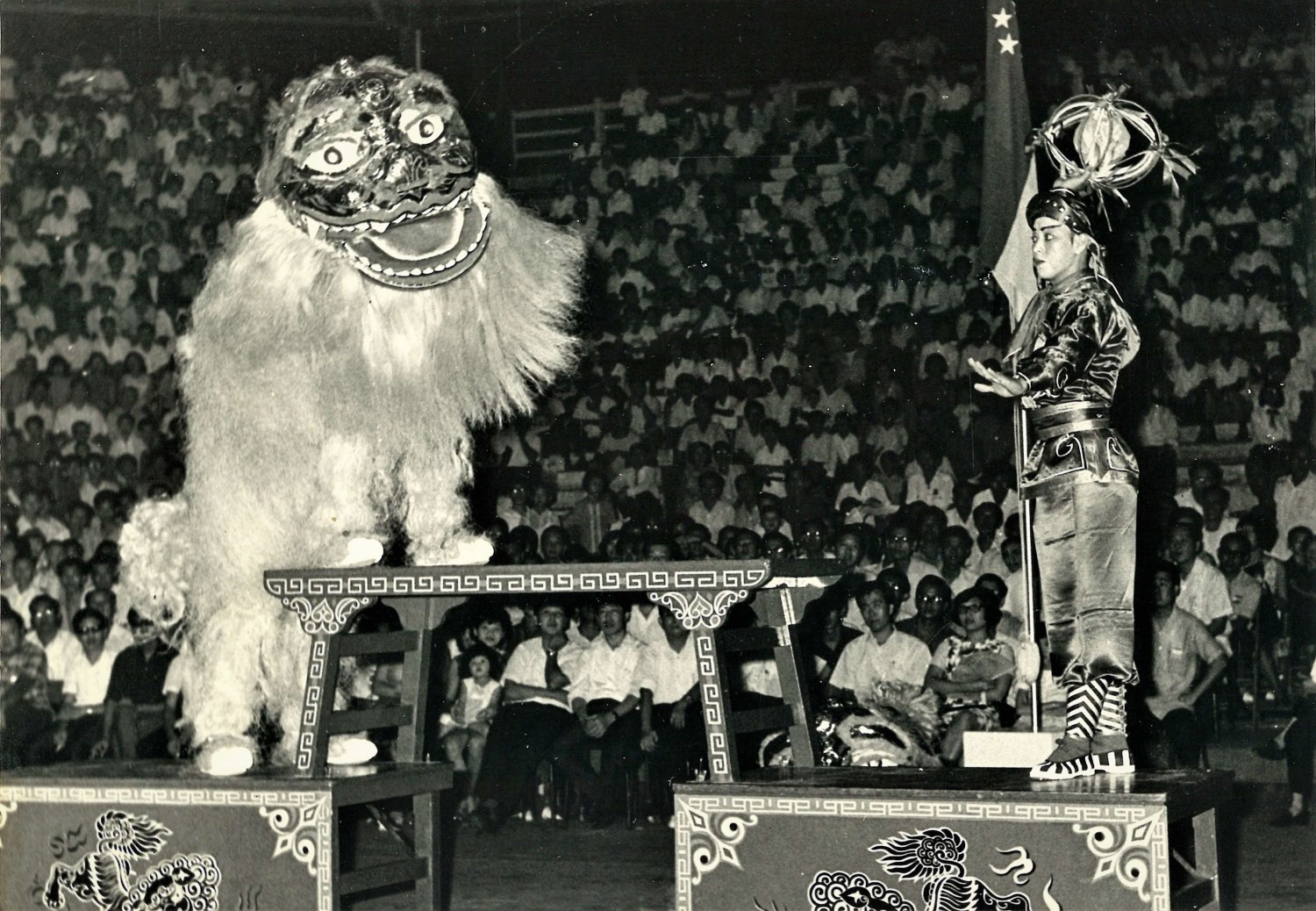 The Chin Woo lion dancers wow the crowd at the first National Wushu Competition in 1967.
The Chin Woo lion dancers wow the crowd at the first National Wushu Competition in 1967. Showing off their moves at the inaugural 1967 National Wushu Competition.
Showing off their moves at the inaugural 1967 National Wushu Competition.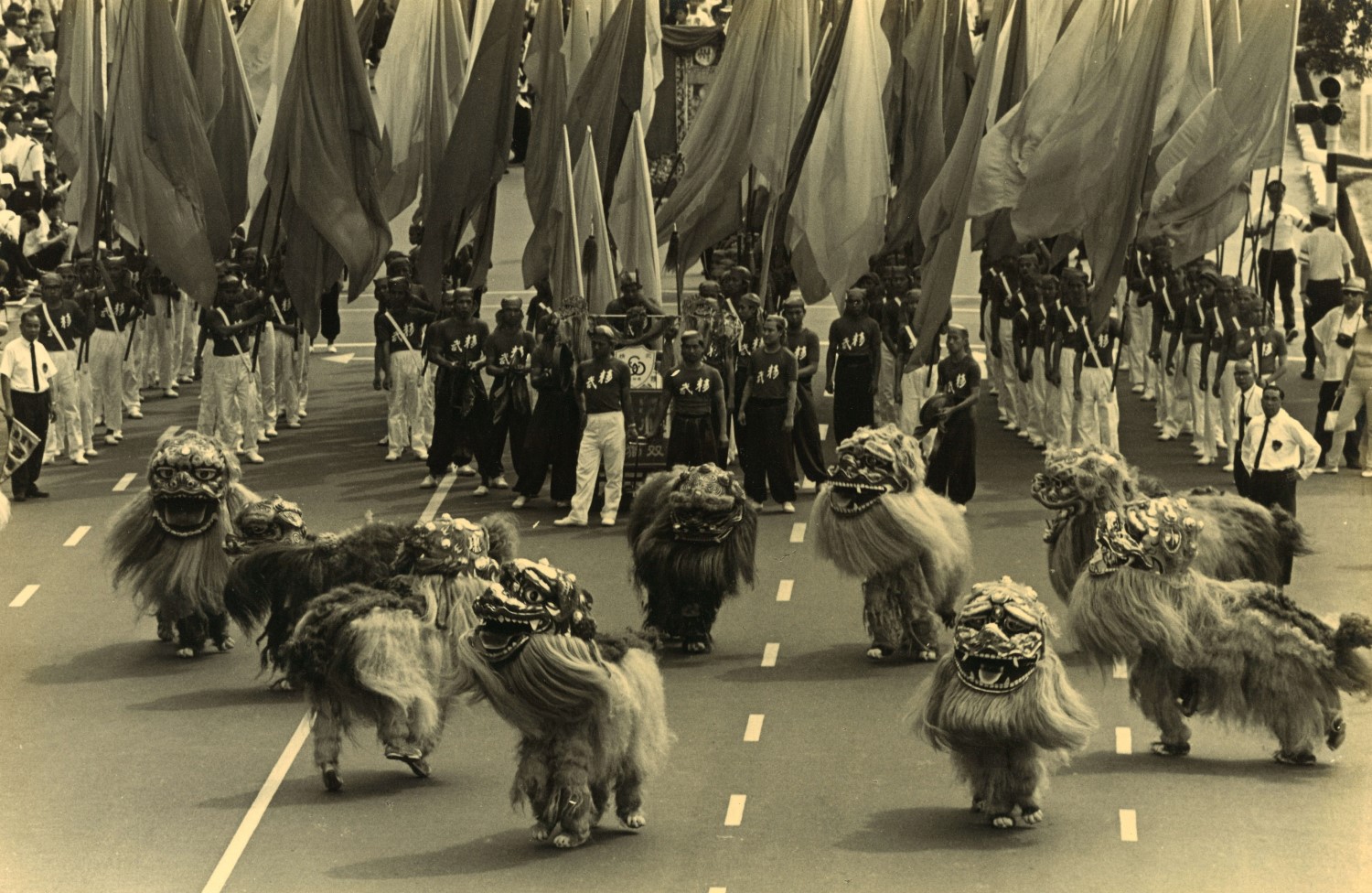 The Chin Woo lion dancers performing at the 1967 National Day Parade.
The Chin Woo lion dancers performing at the 1967 National Day Parade.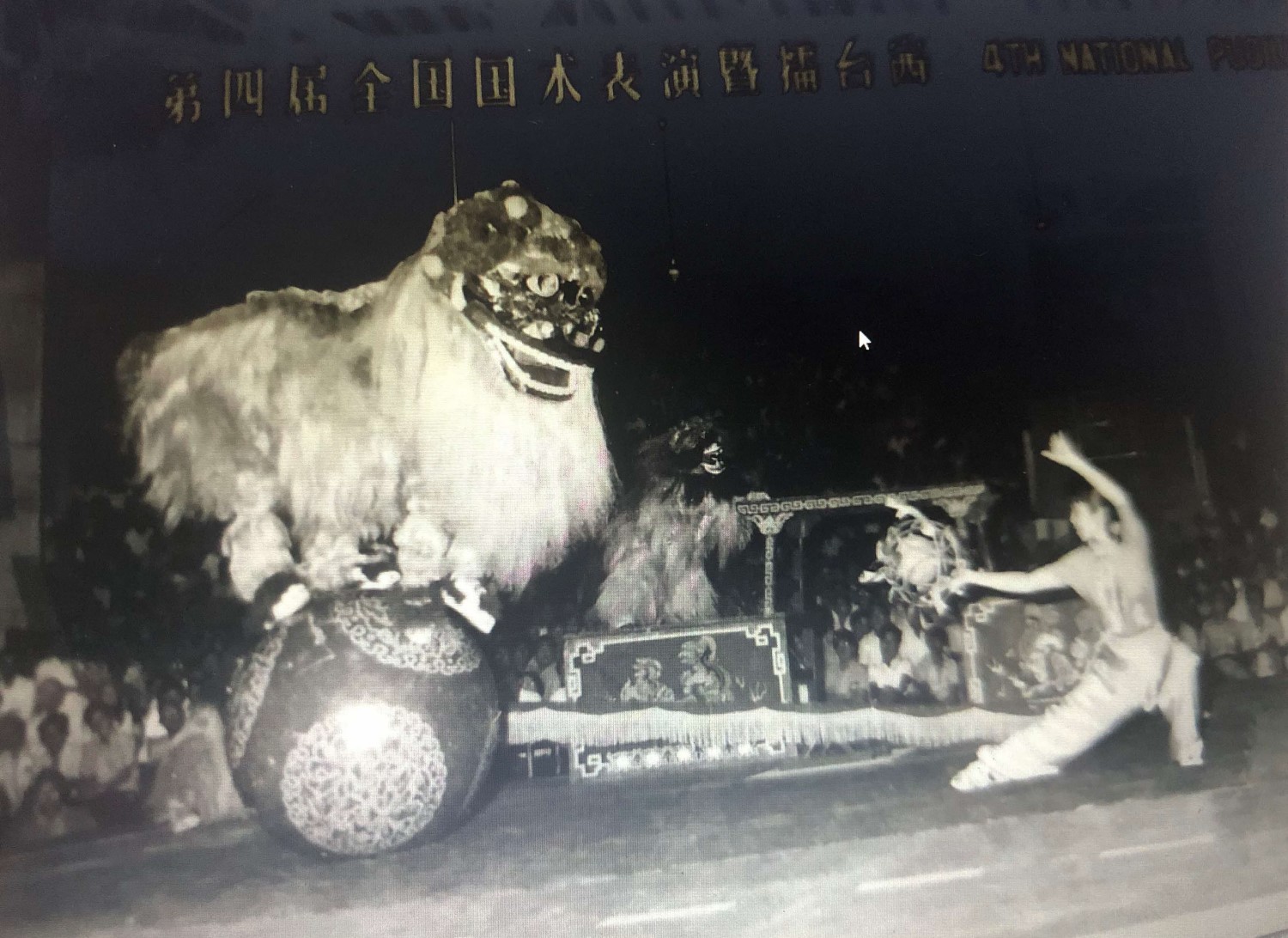 The Golden Lion Dance Troupe at the 4th National Wushu Competition held in June 1976.
The Golden Lion Dance Troupe at the 4th National Wushu Competition held in June 1976.Notes
-
“Northern Lion,” Singapore Chin Woo Association, accessed 26 November 2024, https://sgchinwoo.com/northern-lions/ ↩
-
“Chinese Lion Dance: Origins, Styles and Etiquettes,” China Educational Tours, accessed 17 January 2025, https://www.chinaeducationaltours.com/guide/chinese-new-year-lion-dance.htm; “Northern Lion Dance and Southern Lion Dance,” Beijing Tourism, accessed 17 January 2025, https://english.visitbeijing.com.cn/article/47OO1XGJkT1 ↩
-
“Symbolism of the Lion,” Lion Dance Singapore, accessed 19 March 2025, https://www.liondance.sg/blog/the-lion-dance-a-traditional-art-of-asian-culture ↩
-
Seow Peck Ngiam, “One Hundred Years of Martial Arts: A History of the Singapore Chin Woo (Athletic) Association,” BiblioAsia 20, no. 1 (Apr–Jun 2024): 64–67. ↩
-
Seow, “A Hundred Years of Martial Arts.”; “Northern Lions”. ↩
-
“Northern Lion”. ↩
-
“Northern Lion”. ↩
-
“Northern Lion”. ↩
-
“Northern Lion”. ↩
-
“Northern Lion”. ↩
-
“Northern Lion”. ↩

